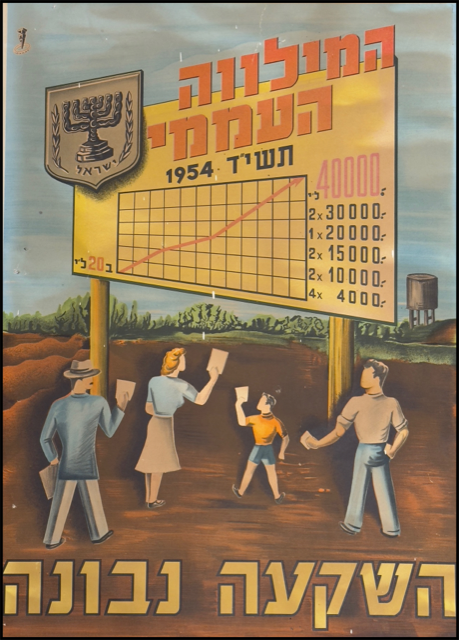In the first few years after Israel’s independence, it incurred significant expenses to defend itself in the 1948 war, absorb 800,000 immigrants and build the state. Although significant financial support came from outside of Israel (including through the sale of Israel Bonds starting in 1951), a large portion of the costs were borne directly by Israeli citizens.
The government taxed Israelis heavily, and then raised further funds by borrowing from citizens in the form of the “popular loan” that is referred to in this poster from 1954. The loan was often mandatory (making it essentially another kind of tax) but it did provide for repayment with interest. As an additional sweetener, loan purchasers were entered into a draw to receive a prize of up to 40,000 Israeli lira for a 20- lira loan. This poster depicts four people holding their loan certificates, above a banner that says “wise investment”.
Seventy years later, Israel’s war against Hamas has come with a significant cost. The cost in the lives of the innocent victims of the Oct. 7 terrorist attack, the hostages killed by Hamas, and the soldiers who died in service to Israel is beyond any measure.
From a financial perspective, it is estimated that the cost of the war will exceed 200 billion New Israel Shekels (over $70 billion).
Supporting Israel and its people by rebuilding the communities destroyed on Oct.7, assisting the many internally displaced citizens, and keeping Israel safe and strong remains what it was in 1954: a wise investment.
